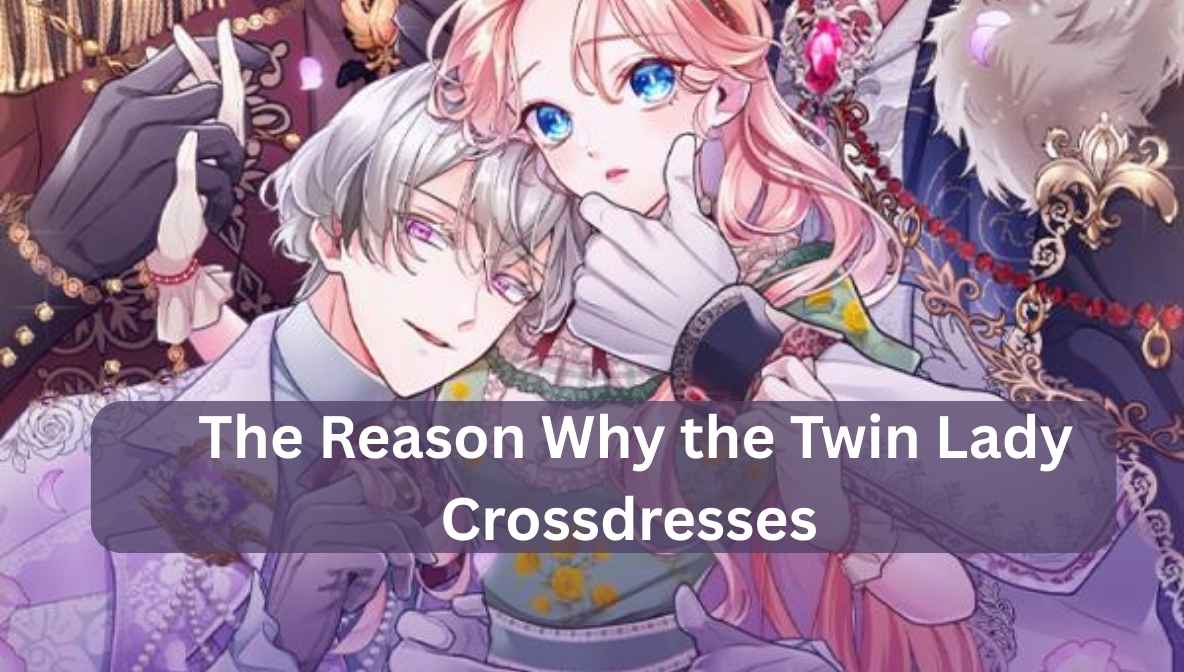The Reason Why the Twin Lady Crossdresses: A Tale of Fate
In the enthralling manhwa The Reason Why the Twin Lady Crossdresses, readers are introduced to Linari, a young noblewoman who, after facing execution due to a crown prince’s scheme, finds herself transported three years into the past. Determined to alter her destiny, she adopts the identity of her twin brother, Liam, and enrolls in Fortis Academy. This decision sets her on a path filled with challenges, secrets, and unexpected relationships. In this journey, her transformation is not simply a disguise—it is a statement of resolve. Furthermore, the storyline delivers suspense, romance, and the emotional weight of rewriting one’s fate.
Key Points:
- Linari’s crossdressing is a strategic move to change her fate.
- The story blends elements of fantasy, romance, and school life.
- Themes of identity, sacrifice, and resilience are central to the narrative.
What Motivates Linari to Crossdress?
Linari’s decision to disguise herself as her twin brother stems from a profound desire to rewrite her tragic fate. After being executed due to the crown prince’s machinations, her unexpected return to the past offers a rare second chance. As a result, by assuming Liam’s identity, she aims to navigate the political and social intricacies of Fortis Academy, gathering knowledge and allies to prevent her previous demise. This act of crossdressing is not merely a disguise but a symbol of her determination to seize control of her destiny. In addition, it provides her the opportunity to correct the injustices of her past life.
How Does Linari Maintain Her Disguise at Fortis Academy?
Maintaining her male persona requires Linari to master various aspects of her brother’s identity. She adopts his mannerisms, speech patterns, and even his academic interests. Because the academy’s environment is filled with keen-eyed peers and strict instructors, constant threats to her secret are unavoidable. Her interactions with the “Perseus” group, led by the crown prince, further complicate matters. Since their growing interest in her challenges her ability to remain undetected, Linari must be exceptionally careful. Ultimately, it becomes clear that her intelligence, preparation, and adaptability are key to preserving the charade.
Comparison Table: Linari vs. Liam
| Aspect | Linari (as Liam) | Liam (Original) |
|---|---|---|
| Academic Focus | Strategy & Politics | Literature & Arts |
| Social Behavior | Reserved & Observant | Outgoing & Charismatic |
| Physical Training | Intensive & Rigorous | Moderate & Casual |
What Challenges Arise from Linari’s Dual Identity?
Living a double life is fraught with challenges. Linari must constantly be vigilant, ensuring her true identity remains concealed. Moreover, emotional entanglements—especially with members of the “Perseus” group—test her resolve. The psychological toll of suppressing her true self while embodying another persona leads to moments of self-doubt and internal conflict. Furthermore, the fear of exposure looms large, as any slip could jeopardize her mission and safety. Therefore, Linari is forced to stay focused and emotionally resilient at all times.
Note: Maintaining a dual identity requires immense mental fortitude and adaptability.
How Does the Crown Prince Influence Linari’s Journey?
The crown prince, central to Linari’s past demise, plays a pivotal role in her current journey. His leadership of the “Perseus” group brings him into frequent contact with Linari, now disguised as Liam. Unaware of her true identity, he becomes intrigued by her intellect and demeanor. Consequently, this evolving relationship adds layers of complexity to Linari’s mission. She grapples with feelings of mistrust, curiosity, and unexpected affection. In turn, the narrative builds emotional tension that drives much of the plot forward.
Comparison Chart: Linari’s Interactions
| Character | Nature of Interaction | Emotional Impact |
|---|---|---|
| Crown Prince | Strategic & Intriguing | Conflicted |
| Perseus Members | Friendly & Supportive | Comforting |
| Academy Peers | Competitive & Skeptical | Stressful |
What Themes Are Explored in the Manhwa?
The Reason Why the Twin Lady Crossdresses delves into themes of identity, resilience, and the quest for self-determination. Linari’s journey underscores the lengths one might go to alter their fate and the sacrifices involved in such endeavors. Additionally, the narrative touches upon societal expectations, gender roles, and the complexities of human relationships. These elements offer readers a rich tapestry of emotional and philosophical exploration. Therefore, the manhwa not only entertains but also provokes thought about the boundaries of self-expression and personal freedom.
Note: The manhwa challenges traditional notions of identity and destiny, prompting readers to reflect on their own life choices.
Conclusion
The Reason Why the Twin Lady Crossdresses presents a compelling narrative of a young woman’s struggle against predetermined fate. Through Linari’s experiences, readers are invited to contemplate themes of identity, sacrifice, and the transformative power of choice. In essence, her story serves as a testament to the resilience of the human spirit and the enduring quest for self-definition. Above all, it reinforces the idea that one’s destiny is not fixed—it can be rewritten with courage and resolve.
FAQs
Q1: What is the main plot of The Reason Why the Twin Lady Crossdresses?
A1: The story follows Linari, who, after being executed, travels back in time and disguises herself as her twin brother to change her fate.
Q2: Why does Linari choose to crossdress?
A2: She believes that by assuming her brother’s identity, she can navigate societal structures and prevent her past execution.
Q3: Who are the “Perseus” group?
A3: A quartet led by the crown prince, whose interactions with Linari add complexity to her mission.
Q4: What challenges does Linari face at Fortis Academy?
A4: She must maintain her disguise, manage relationships, and avoid exposure, all while pursuing her goal to alter her destiny.
Q5: What themes are central to the manhwa?
A5: Identity, resilience, societal roles, and the struggle against predetermined fate are key themes explored in the narrative.



